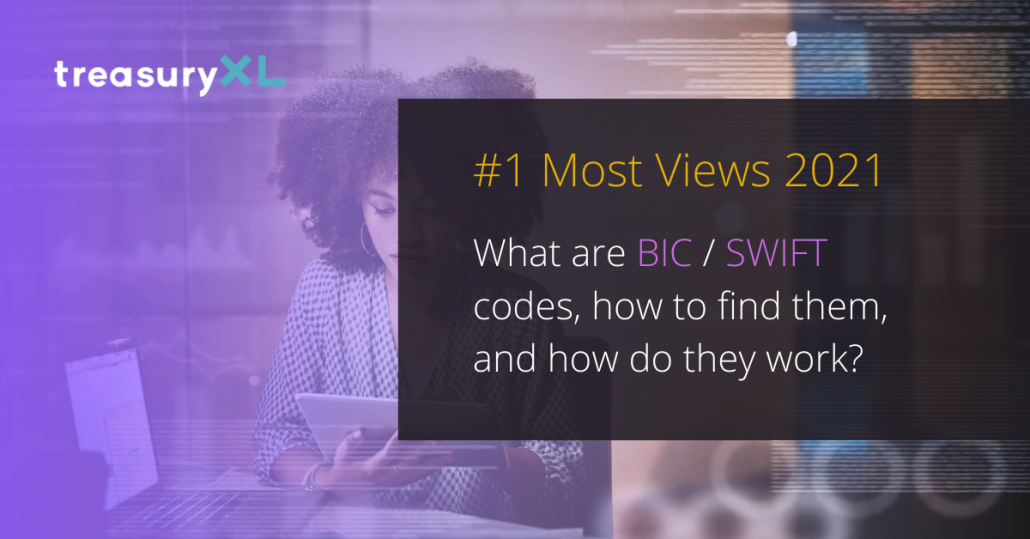What are BIC/ SWIFT codes, how do you find them, and how do they work?
Our guide will let you know about SWIFT and BIC codes inside and out, also for 2025!
To send or receive money internationally, your bank or any other financial institution must know where to send the money – but how do they know? Make way, for this is where a BIC/ SWIFT code comes into the scene! If you’ve ever initiated a money transfer with Xe or read our guide to sending money, you might’ve seen that you’ll need a BIC or SWIFT code. But what is that, and where would you find it?
Starting from what a SWIFT/ BIC code is and why you need it to how you can find it easily and use it for transferring money globally, our guide will let you know everything about this code inside out. Ready, get set, go!
What is a BIC or SWIFT Code?
BIC stands for Bank Identification Code, and SWIFT stands for the Society for Worldwide Interbank Financial Telecommunications. Sometimes, people use the terms “BIC” and “SWIFT” interchangeably. A SWIFT code or SWIFT ID typically identifies banks and other financial institutions worldwide, for international transactions. More specifically, it says who and where these institutions are, so that your money goes to the correct place – you might even think of it as a global identity card for banks.
The International Organization for Standardization (ISO) recognizes and approves SWIFT codes for financial and non-financial institutions. Right now, there are over 40,000 live SWIFT codes in the world.
What does a BIC/ SWIFT code look like?
SWIFT/ BIC codes contain 8-11 characters that identify your city, country, bank, and the branch of your bank. The code may look something like this: AAAABBCCXXX
All muddled up? Let’s get this BIC format straight:
-
AAAA: 4-letter bank code that’s usually a shortened version of your bank’s name.
-
BB: 2-letter country code that represents the country in which the bank’s located.
-
CC: 2-character location code, pointing to the place where the bank’s head office is situated. It’s made up of letters and numbers.
-
XXX: 3-digit branch code that specifies a particular branch of the bank, usually the bank’s headquarters. These last 3 digits are optional, though.
To help you understand better, we’ve listed out the BIC/ SWIFT codes for a few large banks from around the world:
-
Scotiabank (Canada): NOSCCATTXXX
-
Charles Schwab Bank (US): CSCHUS6SXXX
-
Bank of England: BKENGB2LXXX
-
State Bank of India: SBININBBXXX
Why do I need a BIC/ SWIFT code?
If you want to send money around the world, you’ll almost always need to use a SWIFT/ BIC code. That’s because money transfers technically don’t actually transfer money around the world. Banks securely transmit information to one another through the SWIFT system or their other channels, which lets them know where the money should come from (which account should be debited), and which account should be credited with the money. In short, without this code, your bank won’t know where exactly they should send your money to.
So, it’s important for a bank on one side of the world to find the right bank on the other side, when it comes to international wire transfers, even when you use an international money transfer app like Xe, you’ll have to enter the BIC/ SWIFT code of the recipient’s bank for wiring money to the recipient, because the money will travel from your bank account to your recipient’s bank account.
How do I find my SWIFT/ BIC code?
You can find your SWIFT/ BIC codes with a few options:
- Check the bank statements
You can usually find your bank’s BIC/ SWIFT code in your bank account statements. If you’re using an online bank, log into your digital bank account to easily view your bank statement.
- Check the bank’s official website
Visit the bank’s website and check their Frequently Asked Questions (FAQs) section, international wire transfers, and other related links for their BIC/ SWIFT code. If there’s a search feature on the website, enter “SWIFT code” in the search box.
- Contact your bank
In case you still can’t find the BIC/ SWIFT code, reach out to your bank via live chat, phone, social media, or email.
How do I verify a SWIFT code?
When sending or receiving money, always cross-check the BIC/ SWIFT code and other details with the recipient or your bank before you or the sender sends the money.
But why should you cross-check it?
As a matter of fact, if you enter a SWIFT code that doesn’t exist, the bank should reverse the payment you’ve made, and return your money. They’ll be charging a specific fee for that, though, and it might take some time before you get your money back.
As soon as it hits you that you’ve entered the wrong code to send money internationally (uh-oh), get in touch with your bank right away. They may be able to cancel the transaction, so keep your fingers crossed.
You can avoid such a scenario if you make sure that the BIC/ SWIFT code has:
- No typing mistakes
You might think entering a SWIFT code is the work of a moment. But when you finally type it, character by character, it might seem as long as a marathon. Since it’s easy to make a mistake while typing in the code, try to copy and paste the code whenever possible.
- The correct format
Always stick to the format of the BIC/ SWIFT code that the recipient has given you. For example, don’t type the country code before entering the bank code. And remember, there shouldn’t be any spaces between the characters in the code.
How do I transfer money using a SWIFT code via money transfer apps?
Once you sign up on online money transfer apps like Xe, you need to link your bank account directly to the app. After that, you can send money straight to the recipient’s bank account through a wire transfer, no matter where in the world he or she may be. You’ll usually have to follow these steps for wiring money between banks via Xe:
-
Log in.
-
Confirm which currencies you’d want to exchange. You can use Xe’s free Currency Converter tool for a quick check on the mid-market rate.
-
Enter the amount you wish to send.
-
Enter the recipient’s name and address.
-
Enter the recipient’s bank details, including the BIC/ SWIFT code and the International Bank Account Number (IBAN) of his or her bank.
-
Choose your payment method and confirm the money transfer.
Is IBAN the same as SWIFT?
No, IBAN and SWIFT are 2 different codes, but both of these do the same job – sending or receiving money. Banks use SWIFT codes to identify bank branches for making international payments. On the other hand, IBAN codes specify individual bank accounts for both domestic and international payments.
- Do I need an IBAN number or a SWIFT code?
It depends on the country to which you’re sending money. For example, banks in the US, Australia, and New Zealand don’t use IBAN numbers, but they use SWIFT codes for different banking services. But if you’re wiring money to a country within the Eurozone, you’ll surely need a SWIFT/ BIC code along with an IBAN number.
Is a SWIFT/ BIC code the same as a sort code?
Nope, sort codes aren’t the same as SWIFT codes. Sort codes are 6-digit codes that help British and Irish banks to identify bank branches for domestic payments (payments within a country).
- Do all banks use BIC/ SWIFT codes?
No, all financial institutions, especially some small banks and credit unions, don’t have SWIFT codes. Instead, these institutions contact banks that do have BIC/ SWIFT codes, and ask them to serve as intermediaries for wiring money. You might also come across some financial institutions that use SWIFT for only a certain number of their branches, and not all of them.
Is a SWIFT code the same for all branches?
It depends on the recipient’s bank. Some banks may have one BIC/ SWIFT code for all their branches, while others have unique SWIFT codes for each of their branches. Plus, since all the branches of a bank may or may not use the SWIFT network, the code usually specifies the bank’s head office or primary office. So, are you ready to make an international money transfer using a BIC/ SWIFT code? Download the Xe app or sign up today!
Get in touch with XE.com
About XE.com
XE can help safeguard your profit margins and improve cashflow through quantifying the FX risk you face and implementing unique strategies to mitigate it. XE Business Solutions provides a comprehensive range of currency services and products to help businesses access competitive rates with greater control.
Deciding when to make an international payment and at what rate can be critical. XE Business Solutions work with businesses to protect bottom-line from exchange rate fluctuations, while the currency experts and risk management specialists act as eyes and ears in the market to protect your profits from the world’s volatile currency markets.
Your company money is safe with XE, their NASDAQ listed parent company, Euronet Worldwide Inc., has a multi billion-dollar market capitalization, and an investment grade credit rating. With offices in the UK, Canada, Europe, APAC and North America they have a truly global coverage.
Are you curious to know more about XE?
Maurits Houthoff, senior business development manager at XE.com, is always in for a cup of coffee, mail or call to provide you detailed information.
Visit XE.com
Visit XE partner page




 Presenter
Presenter


